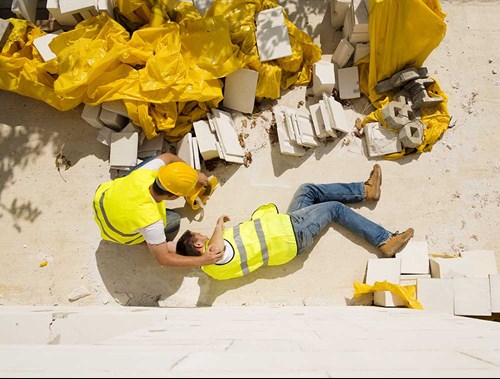Training, more customer awareness and the use of technology are among the things that will help to reduce the most common cause of fatal injuries, says NFRC technical officer Gary Walpole.

Back in March 2018, Gary Walpole, NFRC’s technical officer gave evidence to the All Party Parliamentary Group (APPG) for Working at Height after it launched an inquiry into injuries and fatalities caused by falls from height and falling objects.
Statistics published by the HSE in 2017, certainly don’t make good reading. It found that falls from height were the most common cause of fatal injury among workers in the past five years, with just under half of those fatalities (19 per year on average) happening within the construction sector.
A read through the HSE website reveals that in April and May alone there have been 10 serious injuries, which have resulted in prosecutions. On 3 May, for example, a scaffolding company was fined £33,333 and ordered to pay £14,638 in costs for safety breaches that led to a worker to fall through a fragile roof light.
The Roofing Times caught up with Gary to talk about why falls from height remain such a problem and what can be done to improve the industry’s record.
What are the primary reasons for falls, or falling objects?
A lack of control of who carries out the works at height, what training is required, and how to verify relevant skills, knowledge and experience. There’s also a lack of understanding about hazards. For example, engineers servicing M&E on flat roofs may be blissfully unaware about the dangers of fragile surfaces or open edges. Meanwhile, there often seems to be an assumption that a task which only takes a minute to complete is somehow less risky and so the regulations can be flouted.
What do you think of the current Work at Height Regulations (2005)?
The current regulations are suitable, but clearly, they have not eradicated falls from height. The message that needs to be communicated better is that in order to comply with the regulations you must first plan the work, then use the right equipment, and then use competent contractors – in that order. Follow these three things and we should see a reduction in accidents. Simplifying the narrative for smaller businesses that don’t have the in-house expertise would certainly help them to understand the legislation better. But ultimately it comes down to behaviour change so we have to work cooperatively to find new ways of influencing a change in culture.
Are there specific preventative measures, which are not currently required by law?
A working at height training programme, which is accredited to the operative and renewed on an ongoing basis, would be a good start. This could build upon the working at height section of the CITB Health, Safety and Environment Test, while training should be required for working with specific equipment such as mobile towers. The client and building owners also need a better understanding of the dangers and their legal responsibility when selecting suitable contractors. Designing-in safety such as higher parapets, would also make the building more maintenance-friendly.
Ultimately it comes down to behaviour change so we have to work cooperatively to find new ways of influencing a change in culture
What role should end users/customers have?
Customers really do need to ensure that work is properly planned, all hazards have been identified and the risks controlled, with clear and concise guidance to help them through this process. A media campaign, highlighting the importance of safety, might also encourage homeowners to look beyond the simple cost of repairs. Schemes such as the NFRC’s forthcoming accredited roofer scheme, will certainly help clients make informed decision when choosing a contractor in the same way that most homeowners will get GasSafe-accredited plumbers to install and service their boilers.
Would you support enhanced reporting as a way to better understand and reduce falls from height?
Yes, we need to create a culture that is open and honest about incidents and accidents in order to gain improvement. By being able to analyse accident statistics we can understand where the accidents are occurring and to whom. This will help identify the target audience when developing safety training or campaigns to a specific sector.
Is there a role for digital technology and other innovations in improving safety?
The use for drones or high-definition aerial photography can help at the inspection and survey stage. The technology can help calculate roof length, pitch, and additional features on both residential and commercial properties without the need to access the roof. Virtual Reality headsets might also give trainees a better understanding of the hazards they will face early on. As the technology evolves, an operative on a roof could share something that they see or are worried about and transmit this directly to an experienced safety manager. This will allow them to advise the operatives on how to proceed and update any amendments to risk assessment immediately.
The results of the APPG Inquiry will be published later this year.



